- Home
- Bobby Akart
Electromagnetic Pulse Page 3
Electromagnetic Pulse Read online
Page 3
At least one major public official downplays the cyber attack scenario. The nation's top disaster responder, FEMA director, Craig Fugate shrugs at the threat of a power grid collapse.
"When have people panicked? Generally what you find is the birth rate goes up nine months later," he said, then turned more serious: "People are much more resilient than the professionals would give them credit for. Would it be unpleasant? Yes. Would it be uncomfortable? Have you ever seen the power go out, and traffic signals stop working? Traffic's hell, but people figure it out."
Fugate's big worry in a mass outage is communication, he has said. When people can get information and know how long power will be out, they will handle it much better.
Don’t worry, the government will take care of you. Naïve.
Is there a precedent for the use of a cyber attack to take down a nation’s power grid? Let’s look at 2015.
On March 31, 2015, the majority of homes and businesses in Turkey lost power as the result of alleged cyber attack by Iranian proxies. Analysts initially declared this the first full-blown blackout utilizing Cyber Warfare. Months later, Turkey announced the blackout was caused by an equipment malfunction, not by a cyber attack. One has to wonder if the Turkish government denied the cyber intrusion in order to avoid admission of the vulnerability of its critical infrastructure to cyber attack.
On December 23, 2015, when a cyber attack on the power grid in Ukraine thrust that part of the nation into darkness, nearly 80,000 homes in Ukraine’s Ivano-Frankivsk region were without power. Believed to be part of Ukraine-Russian hostilities in the region, initial reports pointed to Russian hackers armed with a malware called BlackEnergy. This is the most recent successful attack on a power grid by hackers with the largest impact on a nation.
Reports reveal that a Russian proxy group known as Sandworm carried out the attack by remotely switching breakers to cut power, following the installation of the BlackEnergy malware in order to prevent technicians from identifying the attack. The attack also included a denial of service to the utility's phone systems. Robert Lee, a former US Air Force cyber warfare operations officer who helped compile the report, was quoted by Reuters as saying, "This was a multi-pronged attack against multiple facilities. It was highly coordinated with very professional logistics. They sort of blinded them in every way possible."
In poll after poll, one of the threats that concerns preppers is the use of a cyber attack to cause a grid-down scenario. There are many bad actors on the international stage. Each one is capable of wreaking havoc in the US, by shutting down our power grid and enjoying the resulting chaos.
No bombs. No bullets. No swordfights. Just a few keystrokes on the computer, and we're done.
What if?
EMP: Electromagnetic Pulse
EMP: Electromagnetic Pulse is a primer on the threats we face as a nation from an attack delivered by an Electromagnetic Pulse weapon. The constant barrage of cyber intrusions into the public and private sector have captured the news headlines in recent years, but it is time to refocus on the threat an EMP poses for our nation’s critical infrastructure.
Senator Ron Johnson, of Wisconsin, Chairman of the Senate Committee on Homeland Security and Governmental Affairs, began hearings in the summer of 2015 on the threat of an EMP detonation over the United States.
The witnesses included, among others; James Woolsey, former Director of Central Intelligence, Joseph McClelland, Director of the Office of Energy Infrastructure Security at FERC, and Christopher Currie, Director of Homeland Security and Justice with the Government Accountability Office.
Their conclusion: The threat is real, and the need for the U.S. to prepare for this eventuality is critical. Chairman Johnson, in his opening remarks, stated that although the issue of EMP has been on the government radar for years, it has largely gone ignored. He pointed out the fact that not one of the suggestions put forward by the congressionally mandated EMP Commission, formed in 2002, has been put in place.
The science behind an electromagnetic pulse might be considered complicated and frightening to some. An EMP event can occur either naturally, (through solar flares, as discussed above) or artificially, as the result of a high-altitude nuclear explosion. The high-energy particles from such an explosion would cascade down to Earth, interacting with the planet’s magnetic field and destroying the electronic systems below. The resulting pulse of energy could destroy millions of transformers in America’s power grid, as the pulse travelled along transformer lines.
The possibility of man-made EMP events has grown in relation to the technological sophistication of America’s adversaries. It is a widely known fact, that both Russia and China already have this capability, and both countries have carried out serious work relating to the generation of EMP in recent years, as part of their respective military modernization programs.
Now, America’s enemies like Iran and North Korea may not be that far behind. Iran, for example, is known to have simulated a nuclear EMP attack several years ago, using short-range missiles launched from a freighter. In 2015, the Iranians fired a medium-range missile capable of carrying a nuclear warhead. North Korea, meanwhile, has acquired the blueprints to build an EMP warhead. In July of 2013, a North Korean freighter made it all the way to the Gulf of Mexico, through the Panama Canal, carrying two nuclear-capable missiles in the ship’s hold.
All of these countries have successfully orbited a number of satellites that could potentially evade U.S. early warning radars. The Strategic Defense Initiative, or Star Wars, as former President Ronald Reagan once called it, was widely panned as bizarre by political opponents and the mainstream media. Today, satellites carrying nuclear warheads are at the ideal altitude to generate an EMP across the entire continental US. Perhaps, President Reagan was right.
Scientists concur that such an attack, if it occurred, would have devastating consequences. A nuclear warhead detonated three hundred miles above St. Louis, Missouri, could collapse the entire nation's power grid. According to the EMP Commission, the recovery time from such a nationwide EMP event might be anywhere from one to ten years. In the meantime, ninety percent of Americans would likely die from starvation, disease, or societal collapse.
Are the threats of an EMP attack and Cyber Warfare mutually exclusive? Not necessarily. North Korea’s recent nuclear test and dictator Kim Jong Un’s claim that he has a hydrogen bomb, has shifted focus away from the cyber threat and onto EMP once again. Although the focus of attention has shifted, at least temporarily, away from cyber threats, the North Korean nuclear threat is just another dimension of the threat from cyber warfare.
Russia, China, Iran, and North Korea have all adopted an asymmetric warfare capability. Cyber warfare is not limited to computer viruses and hacking but is a combined-arms operation that includes the coordinated use of physical sabotage and an EMP attack. Our enemies consider a high-altitude nuclear EMP attack as the ultimate weapon. North Korea’s recent low-yield nuclear test, and its claim that it has a hydrogen bomb, are confirmation of the Congressional EMP Commission’s findings that North Korea is attempting to acquire a super-EMP weapon —a low-yield hydrogen bomb.
There are solutions, and the clarion bell has been rung. Our nation’s leaders have a duty to protect the homeland. This book is intended to raise awareness of the threat, and provide the reader with preparedness solutions. EMP: Electromagnetic Pulse will also help you answer the question:
What if?
EMP: A threat from above to America's soft underbelly below. The clock is ticking. One second after. One year after.
Epigraph
*****
I know not with what weapons World War III will be fought, but World War IV will be fought with sticks and stones.
~Albert Einstein
*****
Civilization is hideously fragile.
There’s not much between us & the horrors underneath, just about a coat of varnish.
~ CP Snow
*****
&nbs
p; The time to repair the roof is when the sun is shining.
~ John F. Kennedy
*****
By failing to prepare, you are preparing to fail.
~ Benjamin Franklin
*****
Because you never know when the day before
is the day before.
Prepare for tomorrow!
PART ONE
WHAT IS AN ELECTROMAGNETIC PULSE?
Chapter One
Let’s Get Technical
Author’s Note: Bear with us here. Understanding the technical aspect of electromagnetic pulse technology is critical to assessing the threat and making your preparations.
An electromagnetic pulse—EMP, is an intense burst of electromagnetic energy caused by an abrupt, rapid acceleration of charged particles, usually electrons. An EMP can contain elements of energy over a large part of the electromagnetic spectrum, from very-low-frequency radio, to ultraviolet, wavelengths.
A typical example is a lightning strike that produces a localized EMP. As the lightning makes contact, it can direct a large electrical current in nearby wires. A single current surge can damage sensitive electronic circuitry, such as wires and connection contained in computers and ancillary equipment. Most of us are aware that electronic and communications systems should have some form of protection against the effects of the surge of electricity caused by a lightning strike. Surge protection devices, AC outlets, and modem jacks offer limited protection against the naturally-occurring electromagnetic pulse caused by lightning.
By definition, an explosion results from the very rapid release of a large amount of energy within a limited space. This definition applies to a lightning strike, a conventional explosive like dynamite, as well as for a nuclear detonation. However, the energy produced by any one of these explosions results from different means.
The sudden release of energy causes a considerable increase of temperature and pressure so that all the materials present are converted into hot, compressed gasses. These gasses reach an extremely high temperature and an increase in pressure, as they expand rapidly. This expansion initiates a pressure wave, or shock wave in its surroundings, whether ground, air, or water. One of the common characteristics of any explosion is a sudden increase of pressure at the front of the resulting wave, followed by a gradual decrease behind it. A shock wave of any magnitude is commonly referred to as a blast wave because it resembles, and is often accompanied by, a very strong wind.
Understand that all explosions are relative. The effects of the shock wave are directly proportional to the amount of electromagnetic energy associated with the detonation. Its force and effect depend on the quantity of energy associated with the explosion.
Like most conventional munitions, nuclear weapons impact its target with a blast wave. There are significant differences, however. Nuclear explosions are millions of times more powerful than the largest of conventional weapon detonations. For the release of the tremendous amount of energy associated with a nuclear weapon, the mass of the nuclear explosive must be much less than that of a conventional high explosive. Also, the temperatures reached in a nuclear explosion are much higher.
One of the principal differences between conventional weapons and a nuclear EMP is the powerful electrical currents created by the blast. For that reason, the effectiveness of the conventional bomb and a nuclear EMP differ because the target is vastly different. Conventional weapons seek out hard targets—a surface burst. Nuclear EMPs seek out a high-altitude location above the Earth’s surface—an air burst.
Chapter Two
What are the characteristics of a nuclear EMP?
A nuclear EMP has three components—E1, E2, and E3, as defined by the International Electrotechnical Commission, or IEC.
The E3 pulse is a very slow pulse that can last anywhere from ten seconds to several minutes. An E3 is common in geomagnetic disturbances from the sun—solar storms, and will vary in effect, based upon the strength of a solar induced EMP.
The E2 pulse usually lasting less than a second, is similar in strength and timing to the electrical pulses produced by lightning.
The E1 pulse is a very fast pulse that generates high voltages in electrical conductors. It is produced when gamma radiation from a powerful nuclear detonation strips away electrons from the Earth’s atmosphere. The process of stripping away the electrons is commonly known as the Compton Effect—the result of a high-energy photon colliding with a target, which releases the electrons. Once released, these electrons travel downward through the Earth’s atmosphere at nearly the speed of light.
If the Earth did not have a magnetic field, a large vertical pulse of electric current like this would strike the area immediately below the detonation. But in reality, the Earth’s magnetic field deflects the flow of electrons across the surface of the planet to create a very large, brief burst of energy—an EMP. This is why there is an inverse relationship between the height of the detonation and the surface area affected; the lower the detonation altitude—the smaller the affected area. A height burst of three hundred miles would affect the U.S. from coast-to-coast.
The E1 pulse causes most of its damage by overwhelming electrical breakdown voltages. An E1 pulse can destroy all forms of electronics because the surge of energy is simply too fast for ordinary surge protectors to provide sufficient protection from the enormous voltage spike.
Chapter Three
What are the differences between a Nuclear EMP, a CME, and an RF Weapon?
As was mentioned above, an electromagnetic pulse comes in many forms, including lightning, geomagnetic disturbances from the Sun, and nuclear weapons EMP weapons.
Here, we will also introduce some of the newest technology in the form of Radio Frequency Weapons—RFW.
RF Weapons, also known as directed-energy weapons, use electromagnetic energy on specific frequencies to disable electronic systems. The principle is similar to that of high-power microwave (HPM) weapons. HPM systems tend to be much more sophisticated and are more likely to be in the control of technologically advanced nations. RF weapons, by contrast, are simple and low-voltage enough that they could be deployed by smaller, less technologically enhanced forces, including terrorists. In fact, they can be manufactured using parts purchased online, or at your local Radio Shack store. Instructions for assembling the components and how to use the RFW are available online as well.
In the electromagnetic spectrum, the range of frequencies for waves is from approximately 102 Hz to more than 1025 Hz. From the lowest frequencies to about 1010 Hertz is the range of long-wave radio, short-wave radio, and microwaves. These lower frequencies carry broadcast radio, television, mobile phone communications, radar, and even highly specific forms of transmission; such as those of baby monitors or garage-door openers.
Due to regulations by the Federal Communications Commission (FCC), AM—amplitude modulation broadcasts, take place across a frequency range from 535 kHz to 1.7MHz. The FCC has assigned the range of 5.9 to 26.1 MHz to shortwave radio, and 26.96 to 27.41 MHz to citizens' band (CB) radio. Above these levels are microwave regions assigned to very high frequency (VHF) television stations 2 through 6, then FM—frequency modulation radio, which occupies the range from 88 to 108 MHz. Higher still are VHF—very high-frequency channels 7 to 13, and UHF—ultra high-frequency television broadcasts. At the highest microwave ranges—around 1010 Hz—is where you will find transmissions from spacecraft.
FCC regulation is necessary to maintain security, privacy, and safety on the airwaves. If a broadcaster or receiver strays outside of its assigned range, it can intercept private communications, or potentially disrupt highly sensitive transmissions. Among the most vulnerable from a safety perspective, are the communications between an aircraft cockpit and the control tower, which could result in grave consequences if disrupted, even for a few seconds.
Why is this important? High-power microwave weaponry produces a voltage and intensity capable of shutting off the computer systems of an aircraft lo
ng enough that a pilot would be unable to operate his navigational controls, potentially causing a crash. With an RF weapon, the intensity of the signal is smaller, but if properly directed, it could possibly disrupt aircraft communication systems long enough to bring down the plane. It could cause the computers to reset, or disrupt safety sensors, navigation systems, data recorders, or control systems. Enough errors in these sensitive flight components, particularly in the highly computerized aircraft of today, might be sufficient to force a plane out of the sky. This threat will be discussed in more depth, as it relates to RFW use by terrorists, namely ISIS.
Concerns over RF interference initially resulted in the prohibition against cell phone, radio, or computer operation aboard an aircraft, from the time of preparation for takeoff, until after it lands. Such relatively weak and harmless electronic devices could interfere with vital flight communications. Imagine the harm that could be done by terrorists operating a directed and more powerful system with malicious intent.
Adding to the dangers of RF weaponry is its portability, allowing it to be operated from the ground. A terrorist could attack a target and seek cover in the process, rendering the sacrifice of the terrorist's life unnecessary. Furthermore, RF weaponry, as a means of electromagnetic warfare, is clean and virtually untraceable.
To summarize, RF Weapons operate as a high-frequency pulse, in the E1 range, similar to a nuclear EMP. The primary differences are that the RF Weapon is localized—directed at a particular target—while a high-altitude EMP is intended to have a broad impact, depending on its height of detonation.

 Geostorm The Collapse: A Post Apocalyptic EMP Survival Thriller (The Geostorm Series Book 3)
Geostorm The Collapse: A Post Apocalyptic EMP Survival Thriller (The Geostorm Series Book 3) Doomsday Apocalypse
Doomsday Apocalypse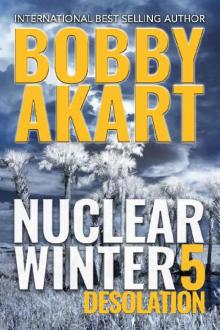 Nuclear Winter Desolation: Post Apocalyptic Survival Thriller (Nuclear Winter Series Book 5)
Nuclear Winter Desolation: Post Apocalyptic Survival Thriller (Nuclear Winter Series Book 5)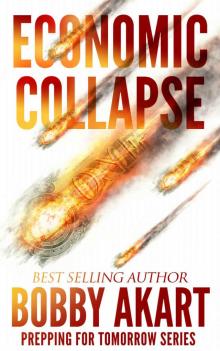 Economic Collapse (Prepping for Tomorrow Book 2)
Economic Collapse (Prepping for Tomorrow Book 2)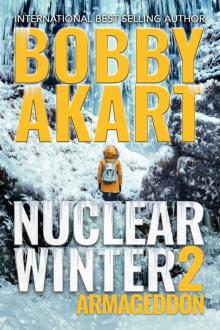 Nuclear Winter Armageddon
Nuclear Winter Armageddon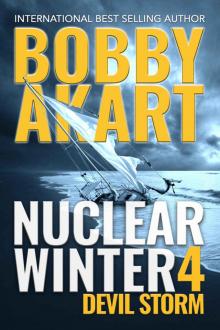 Nuclear Winter Devil Storm
Nuclear Winter Devil Storm Virus Hunters 3: A Medical Thriller
Virus Hunters 3: A Medical Thriller Doomsday Civil War: A Post-Apocalyptic Survival Thriller (The Doomsday Series Book 5)
Doomsday Civil War: A Post-Apocalyptic Survival Thriller (The Doomsday Series Book 5) Asteroid Destruction
Asteroid Destruction Geostorm the Shift
Geostorm the Shift Asteroid Discovery
Asteroid Discovery Virus Hunters 2: A Medical Thriller
Virus Hunters 2: A Medical Thriller Geostorm The Shift: A Post-Apocalyptic EMP Survival Thriller (The Geostorm Series Book 1)
Geostorm The Shift: A Post-Apocalyptic EMP Survival Thriller (The Geostorm Series Book 1) Asteroid Diversion
Asteroid Diversion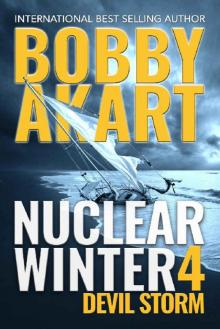 Nuclear Winter Devil Storm: Post Apocalyptic Survival Thriller (Nuclear Winter Series Book 4)
Nuclear Winter Devil Storm: Post Apocalyptic Survival Thriller (Nuclear Winter Series Book 4)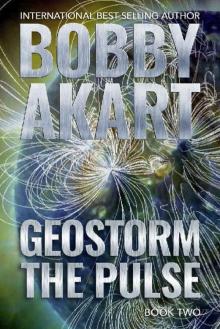 Geostorm The Pulse: A Post Apocalyptic EMP Survival Thriller (The Geostorm Series Book 2)
Geostorm The Pulse: A Post Apocalyptic EMP Survival Thriller (The Geostorm Series Book 2) Yellowstone: Survival: A Post-Apocalyptic Survival Thriller (The Yellowstone Series Book 4)
Yellowstone: Survival: A Post-Apocalyptic Survival Thriller (The Yellowstone Series Book 4)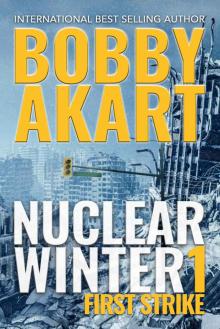 Nuclear Winter First Strike: Post-Apocalyptic Survival Thriller
Nuclear Winter First Strike: Post-Apocalyptic Survival Thriller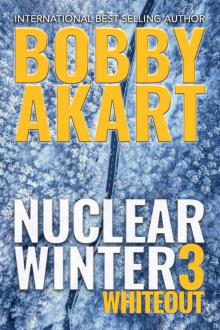 Nuclear Winter Whiteout
Nuclear Winter Whiteout Doomsday Anarchy
Doomsday Anarchy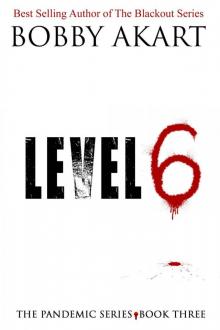 Pandemic: Level 6: A Post Apocalyptic Medical Thriller Fiction Series (The Pandemic Series Book 3)
Pandemic: Level 6: A Post Apocalyptic Medical Thriller Fiction Series (The Pandemic Series Book 3) Martial Law
Martial Law Odessa Reborn: A Terrorism Thriller (Gunner Fox Book 4)
Odessa Reborn: A Terrorism Thriller (Gunner Fox Book 4)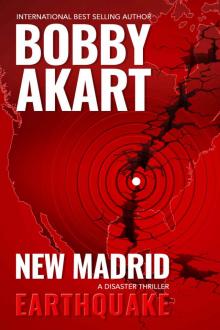 New Madrid Earthquake
New Madrid Earthquake Beyond Borders: Post Apocalyptic EMP Survival Fiction (The Lone Star Series Book 2)
Beyond Borders: Post Apocalyptic EMP Survival Fiction (The Lone Star Series Book 2)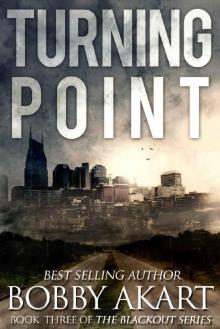 The Blackout Series (Book 3): Turning Point
The Blackout Series (Book 3): Turning Point Patriot's Farewell: A Political Thriller Fiction Series (Boston Brahmin Political Thrillers Book 7)
Patriot's Farewell: A Political Thriller Fiction Series (Boston Brahmin Political Thrillers Book 7) Lines in the Sand_Post Apocalyptic EMP Survival Fiction
Lines in the Sand_Post Apocalyptic EMP Survival Fiction The Mechanics: A Post-Apocalyptic Fiction Series
The Mechanics: A Post-Apocalyptic Fiction Series The Loyal Nine
The Loyal Nine Axis of Evil
Axis of Evil Axis of Evil: Post Apocalyptic EMP Survival Fiction (The Lone Star Series Book 1)
Axis of Evil: Post Apocalyptic EMP Survival Fiction (The Lone Star Series Book 1) Lines in the Sand: Post Apocalyptic EMP Survival Fiction (The Lone Star Series Book 3)
Lines in the Sand: Post Apocalyptic EMP Survival Fiction (The Lone Star Series Book 3) Odessa Strikes
Odessa Strikes The Blackout Series (Book 4): Shiloh Ranch
The Blackout Series (Book 4): Shiloh Ranch Hornet's Nest: A Post Apocalyptic EMP Survival Fiction Series (The Blackout Series Book 5)
Hornet's Nest: A Post Apocalyptic EMP Survival Fiction Series (The Blackout Series Book 5) Yellowstone: Fallout: A Post-Apocalyptic Survival Thriller (The Yellowstone Series Book 3)
Yellowstone: Fallout: A Post-Apocalyptic Survival Thriller (The Yellowstone Series Book 3) Electromagnetic Pulse
Electromagnetic Pulse Texas Strong: Post Apocalyptic EMP Survival Fiction (The Lone Star Series Book 4)
Texas Strong: Post Apocalyptic EMP Survival Fiction (The Lone Star Series Book 4) Fifth Column_Post Apocalyptic EMP Survival Fiction
Fifth Column_Post Apocalyptic EMP Survival Fiction Patriot's Farewell
Patriot's Farewell Texas Strong_Post Apocalyptic EMP Survival Fiction
Texas Strong_Post Apocalyptic EMP Survival Fiction Pandemic: The Innocents: A Post-Apocalyptic Medical Thriller Fiction Series (The Pandemic Series Book 2)
Pandemic: The Innocents: A Post-Apocalyptic Medical Thriller Fiction Series (The Pandemic Series Book 2) Shiloh Ranch: A Post Apocalyptic EMP Survival Fiction Series (The Blackout Series Book 4)
Shiloh Ranch: A Post Apocalyptic EMP Survival Fiction Series (The Blackout Series Book 4) Cyber Attack
Cyber Attack Beyond Borders
Beyond Borders Choose Freedom: A Post-Apocalyptic Fiction Series (The Boston Brahmin Book 6)
Choose Freedom: A Post-Apocalyptic Fiction Series (The Boston Brahmin Book 6) False Flag
False Flag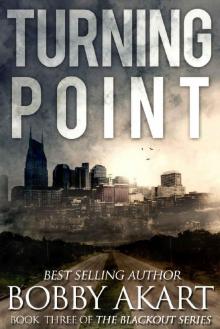 Turning Point: A Post Apocalyptic EMP Survival Fiction Series (The Blackout Series Book 3)
Turning Point: A Post Apocalyptic EMP Survival Fiction Series (The Blackout Series Book 3)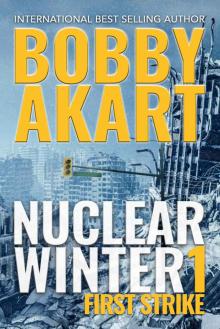 Nuclear Winter First Strike
Nuclear Winter First Strike Pandemic: Beginnings: A Post-Apocalyptic Medical Thriller Fiction Series (The Pandemic Series Book 1)
Pandemic: Beginnings: A Post-Apocalyptic Medical Thriller Fiction Series (The Pandemic Series Book 1) Devil's Homecoming: A Post Apocalyptic EMP Survival Fiction Series (The Blackout Series Book 6)
Devil's Homecoming: A Post Apocalyptic EMP Survival Fiction Series (The Blackout Series Book 6) The Blackout Series (Book 6): Devil's Homecoming
The Blackout Series (Book 6): Devil's Homecoming Yellowstone: Inferno: A Post-Apocalyptic Survival Thriller (The Yellowstone Series Book 2)
Yellowstone: Inferno: A Post-Apocalyptic Survival Thriller (The Yellowstone Series Book 2) Fifth Column: Post Apocalyptic EMP Survival Fiction (The Lone Star Series Book 5)
Fifth Column: Post Apocalyptic EMP Survival Fiction (The Lone Star Series Book 5) Yellowstone: Hellfire: A Post-Apocalyptic Survival Thriller (The Yellowstone Series Book 1)
Yellowstone: Hellfire: A Post-Apocalyptic Survival Thriller (The Yellowstone Series Book 1) The Blackout Series (Book 2): Zero Hour
The Blackout Series (Book 2): Zero Hour Suicide Six: Post Apocalyptic EMP Survival Fiction (The Lone Star Series Book 6)
Suicide Six: Post Apocalyptic EMP Survival Fiction (The Lone Star Series Book 6) Suicide Six_Post Apocalyptic EMP Survival Fiction
Suicide Six_Post Apocalyptic EMP Survival Fiction Zero Hour: A Post-Apocalyptic EMP Survival Fiction Series (The Blackout Series Book 2)
Zero Hour: A Post-Apocalyptic EMP Survival Fiction Series (The Blackout Series Book 2) Beyond Borders_Post Apocalyptic EMP Survival Fiction
Beyond Borders_Post Apocalyptic EMP Survival Fiction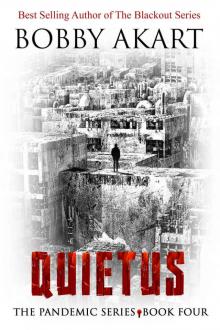 Pandemic: Quietus: A Post-Apocalyptic Dystopian Fiction Series (The Pandemic Series Book 4)
Pandemic: Quietus: A Post-Apocalyptic Dystopian Fiction Series (The Pandemic Series Book 4)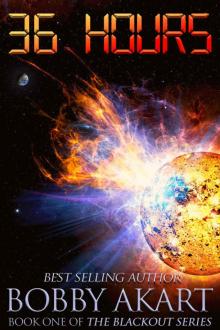 36 Hours: A Post-Apocalyptic EMP Survival Fiction Series
36 Hours: A Post-Apocalyptic EMP Survival Fiction Series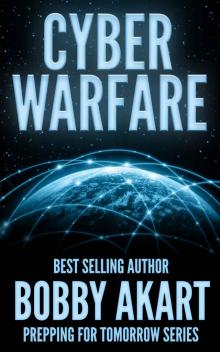 Cyber Warfare
Cyber Warfare